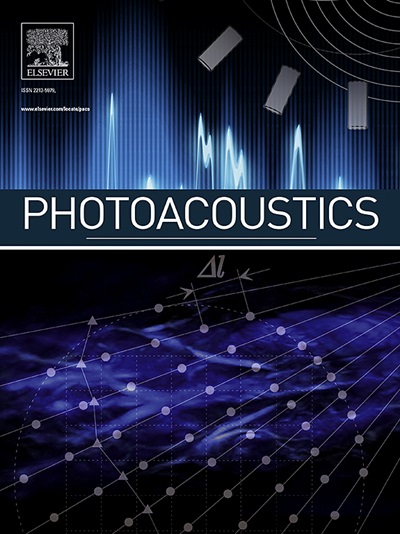Limited-view photoacoustic imaging reconstruction via high-quality self-supervised neural representation
IF 6.8
1区 医学
Q1 ENGINEERING, BIOMEDICAL
引用次数: 0
Abstract
In practical applications within the human body, it is often challenging to fully encompass the target tissue or organ, necessitating the use of limited-view arrays, which can lead to the loss of crucial information. Addressing the reconstruction of photoacoustic sensor signals in limited-view detection spaces has become a focal point of current research. In this study, we introduce a self-supervised network termed HIgh-quality Self-supervised neural representation (HIS), which tackles the inverse problem of photoacoustic imaging to reconstruct high-quality photoacoustic images from sensor data acquired under limited viewpoints. We regard the desired reconstructed photoacoustic image as an implicit continuous function in 2D image space, viewing the pixels of the image as sparse discrete samples. The HIS’s objective is to learn the continuous function from limited observations by utilizing a fully connected neural network combined with Fourier feature position encoding. By simply minimizing the error between the network’s predicted sensor data and the actual sensor data, HIS is trained to represent the observed continuous model. The results indicate that the proposed HIS model offers superior image reconstruction quality compared to three commonly used methods for photoacoustic image reconstruction.
基于高质量自监督神经表征的有限视场光声成像重建
在人体内部的实际应用中,通常很难完全覆盖目标组织或器官,因此需要使用有限视图阵列,这可能导致关键信息的丢失。解决在有限视域检测空间中光声传感器信号的重构问题已成为当前研究的热点。在这项研究中,我们引入了一种称为高质量自监督神经表示(HIS)的自监督网络,它解决了光声成像的逆问题,从有限视点下获取的传感器数据重建高质量的光声图像。我们将期望重建的光声图像视为二维图像空间中的隐式连续函数,将图像的像素视为稀疏的离散样本。HIS的目标是利用全连接神经网络结合傅里叶特征位置编码,从有限的观测中学习连续函数。通过简单地最小化网络预测的传感器数据与实际传感器数据之间的误差,HIS被训练成表示观察到的连续模型。结果表明,与三种常用的光声图像重建方法相比,所提出的HIS模型具有更好的图像重建质量。
本文章由计算机程序翻译,如有差异,请以英文原文为准。
求助全文
约1分钟内获得全文
求助全文
来源期刊

Photoacoustics
Physics and Astronomy-Atomic and Molecular Physics, and Optics
CiteScore
11.40
自引率
16.50%
发文量
96
审稿时长
53 days
期刊介绍:
The open access Photoacoustics journal (PACS) aims to publish original research and review contributions in the field of photoacoustics-optoacoustics-thermoacoustics. This field utilizes acoustical and ultrasonic phenomena excited by electromagnetic radiation for the detection, visualization, and characterization of various materials and biological tissues, including living organisms.
Recent advancements in laser technologies, ultrasound detection approaches, inverse theory, and fast reconstruction algorithms have greatly supported the rapid progress in this field. The unique contrast provided by molecular absorption in photoacoustic-optoacoustic-thermoacoustic methods has allowed for addressing unmet biological and medical needs such as pre-clinical research, clinical imaging of vasculature, tissue and disease physiology, drug efficacy, surgery guidance, and therapy monitoring.
Applications of this field encompass a wide range of medical imaging and sensing applications, including cancer, vascular diseases, brain neurophysiology, ophthalmology, and diabetes. Moreover, photoacoustics-optoacoustics-thermoacoustics is a multidisciplinary field, with contributions from chemistry and nanotechnology, where novel materials such as biodegradable nanoparticles, organic dyes, targeted agents, theranostic probes, and genetically expressed markers are being actively developed.
These advanced materials have significantly improved the signal-to-noise ratio and tissue contrast in photoacoustic methods.
 求助内容:
求助内容: 应助结果提醒方式:
应助结果提醒方式:


